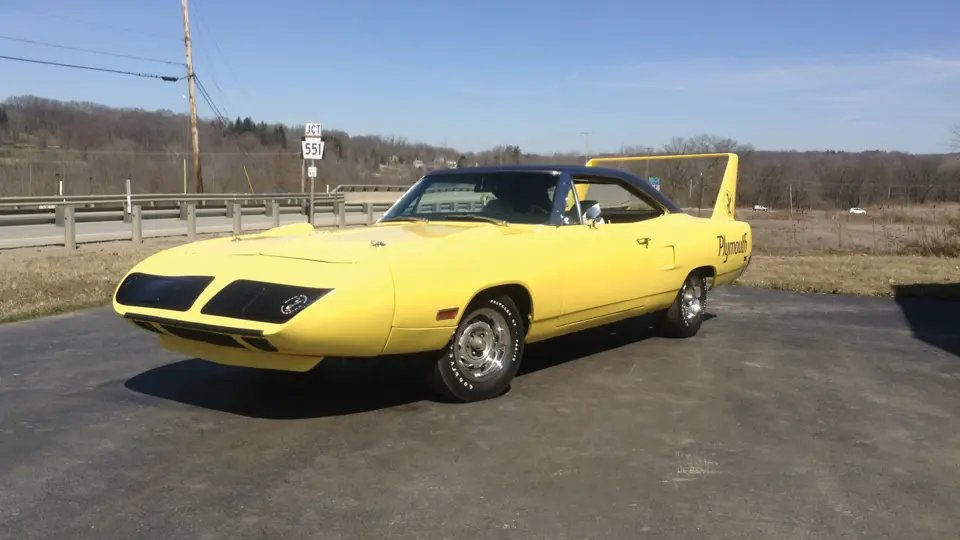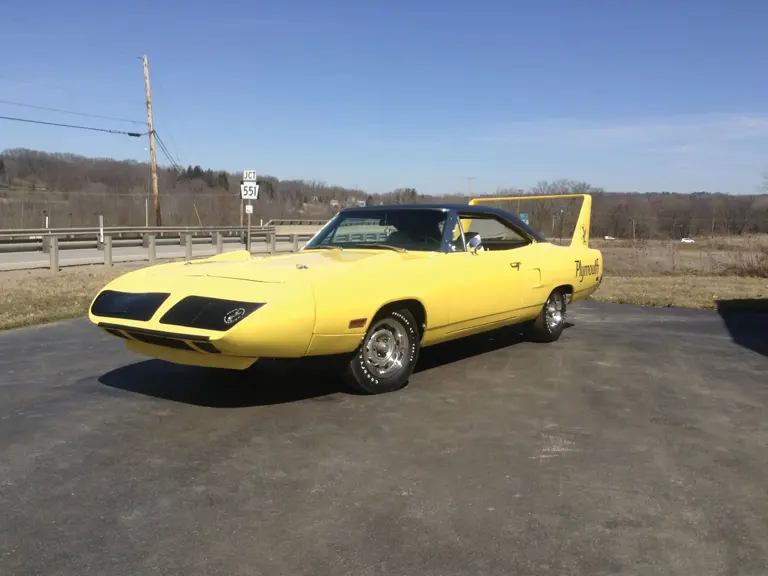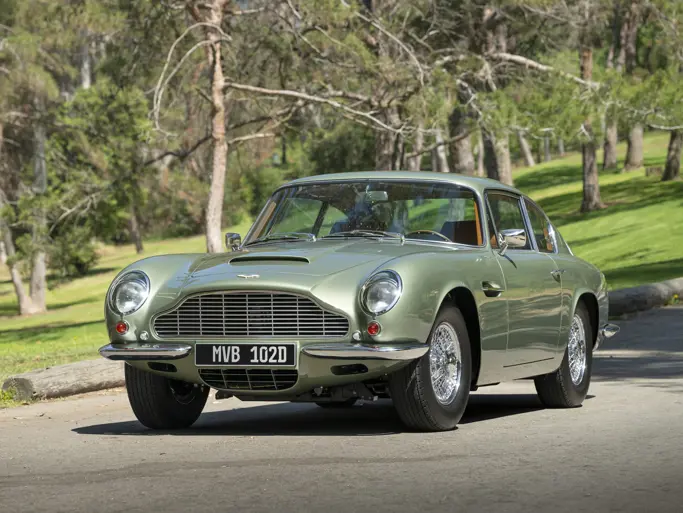 | Auburn, Indiana
| Auburn, Indiana

1970 Plymouth Superbird
{{lr.item.text}}
$130,000 - $160,000 USD | Not Sold
{{bidding.lot.reserveStatusFormatted}}
- Period-correct replacement 440-cid V-8 block
- Console-shift automatic transmission
- Original components and “six-pack” setup for 390-hp
- One owner 1970 to 2015
- One repaint in correct color in 1983
- Original white deluxe bucket seat interior
- Sparingly used
- Unrestored engine bay and undercarriage
- With original factory chalk markings
- Broadcast sheet
- Window sticker
- Limited production
In the late 1960s, as the 426 cubic inch NASCAR Hemi engine reached its highpoint, Chrysler engineers realized that pure horsepower was no longer enough to win races. Richard Petty may have won 27 out of 49 races during the 1968 season in his Hemi-powered Plymouth Satellite, but the aerodynamically advanced Ford Torino enticed Petty to switch over to the Ford camp in 1969.
Chrysler’s strategy to beat Ford on the superspeedways was to reduce aerodynamic drag. While the Charger 500 was an improvement, something more uncompromising was needed. In response, Chrysler released the aerodynamically inspired Dodge Daytona and Plymouth Superbird, igniting the “aero wars”. While Richard Petty did not win the 1970 Grand National championship, he did win 18 of Plymouth’s 21 victories in NASCAR’s 48-race season in 1970; some with the distinctive Superbird. Instantly recognizable with its sloped nose and enormous rear wing, they became a stock car racing icon.
It won in its first race at the 1970 Daytona 500 with Petty Enterprise driver Pete Hamilton at the wheel. Hamilton would also drive the Petty Superbird to victory at both Talladega races that year; proof positive of the impact of this streamlined profile with its high downforce levels and the advantages it brought.
NASCAR homologation requirements mandated that one Superbird be assembled for every two Plymouth dealerships. However, despite their NASCAR success, arresting presence and high performance, street Superbird sales were slow, thanks to dramatically rising insurance rates and gasoline prices. Most of the 1,920 Superbirds produced were equipped with the standard “Super Commando” 440 cubic inch V-8 engine.
Based on the Road Runner, this particular Superbird is reported as being a one owner car from 1970 to 2015 and is stated to be an original car with one repaint in correct code Y1 Lemon Twist back in 1983. The deluxe bucket seat interior is presented in white and is also said to be original and also has the center console. The car is driven by a period-correct replacement 440-cid V-8 block with the original components and a three-two-barrel carburetor (“six-pack”) setup for 390 horsepower. This is mated to a console-shift automatic transmission. The Superbird has been sparingly used during its well-cared-for existence; even the unrestored engine bay and undercarriage exhibit original factory chalk markings.
Additional equipment includes a black vinyl top, Rallye instrumentation, dual chromed exterior rearview mirrors, tinted glass, woodgrain trim on the center console, solid-state AM radio with auxiliary FM tuner, light package, Rallye wheels, F-60 Goodyear Polyglas tires, power steering and power brakes. The broadcast sheet and window sticker also accompany the Superbird. Figures from a reliable source show a total of 1,920 Superbirds produced in 1970. Of the 665 examples built with this engine, 408 had the automatic transmission.
As one of the most desirable in a long series of Plymouth musclecars and surely the most recognizable of the slippery superspeedway NASCAR machines, the legendary Superbird is exceedingly collectable. This exciting Superbird is ready to take its next owner back to the time when musclecars ruled the streets and stock car racetracks of America.




